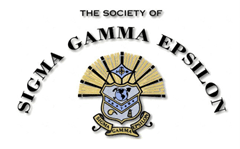Abstract
Choosing the best basemap for landform data collection and analysis is fundamental for accurate measurements and usability. Different types of basemaps may affect how we perceive relief through a map (Phillips et al., 1975); thereby, affecting the precision of data collected. This project collected length and azimuth data of 60 drumlins in Western, NY from four different, ArcGIS online (AGOL)-provided basemaps, as well as two parallel-to-strike and two perpendicular-to-strike hillshades (n=4). Testing the mean length (1,662m, ±529) and azimuth (171°, ±0.3) data for uniformity across basemaps determined if any basemap is more or less reliable for data collection. The Terrain map and 351° hillshade showed the lowest statistic values (t(59) = 1.84, p = .007, R2 = 0.4116). This was due to a poor direction of shading that caused visual loss of the drumlin tails. The least number of difference occurred between the USGS Topographic map and the USA Topographic map (t(59) = -0.01, p = .992, R2 = 0.9412), maps married in creation. The more traditional USGS/USA Topographic map is better for measurements of length and orientation due to the more established outline of landforms and less visual variability. Combining hillshade and topographic maps, however, can create an optimal representation of landforms for remote data collection. Choosing, or better yet, creating the correct basemap for an intended result can ensure readability and useability. It is essential that the creation of useful basemaps can keep up with the data being collected from advancing remote-sensing technologies.
Recommended Citation
Wambach, Gretchen A. and Stewart, Alexander K.
(2022)
"Evaluation Of Measurement Data Across Eight GIS Basemaps Using Drumlins: Combining Basemaps Is Optimal,"
The Compass: Earth Science Journal of Sigma Gamma Epsilon:
Vol. 92:
Iss.
1, Article 1.
DOI: https://doi.org/10.62879/c16579654
Available at:
https://digitalcommons.csbsju.edu/compass/vol92/iss1/1

Author Keywords
GIS, Basemaps, Topographic Maps, Drumlins